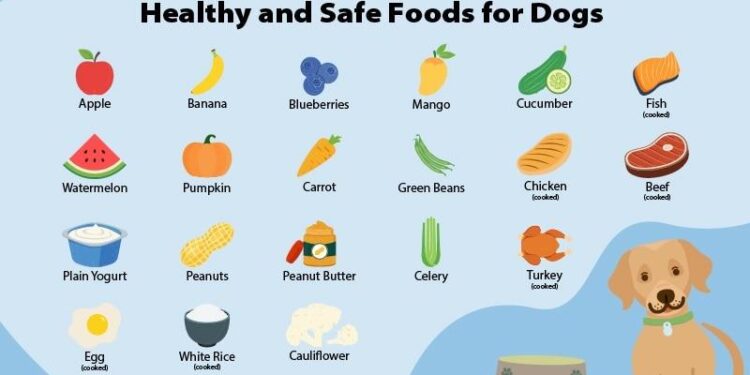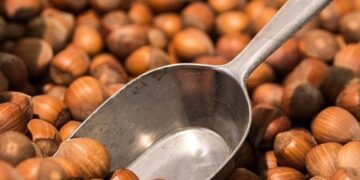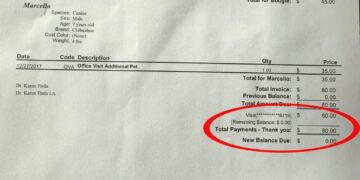Table of Contents
Introduction: The Unraveling of Oscar
The sound that every dachshund owner dreads is not a bark or a whine, but a particular kind of silence followed by a yelp.
It is the sound of fragility made manifest, a high-pitched, piercing cry that signals a potential catastrophe in that uniquely elongated spine.
For the owner of Oscar, a dapple dachshund of immense personality and questionable judgment, that sound came on a Tuesday afternoon.
It was a yelp born from nothing more dramatic than a leap off the sofa, an act performed a thousand times before.
But this time, it was different.
It was a sound that crystallized months of a creeping, low-grade anxiety into a single, sharp point of fear.
This moment was the culmination of a slow unraveling.
For some time, Oscar had been a portrait of subtle decline.
His once-sleek coat had grown dull and patchy.
He was engaged in a near-constant, frantic battle with his own skin, scratching and chewing at his flanks until they were raw and inflamed.1
An undeniable roll of fat, a stubborn inner tube of flesh, had settled around his middle, impervious to the promises of “premium,” “breed-specific” kibble that came in expensive, beautifully designed bags.2
The owner felt a profound sense of helplessness, a feeling familiar to anyone who has poured their love into a pet only to see their efforts fail.
The bond with a dachshund is a unique contract; one agrees to cherish a dog with a lion’s heart housed in a body of profound structural vulnerability.3
That yelp was a reminder of the stakes.
It wasn’t just about an itch or a few extra pounds; it was about the specter of Intervertebral Disc Disease (IVDD), the crippling back condition that haunts the breed like a family curse.5
Oscar’s body, it seemed, was failing, and every conventional solution had proven to be a dead end.
Part I: The Tyranny of the Brown Pellet
The period that followed the initial scare was a frustrating exercise in what could only be described as symptom-chasing.
The owner’s life became a revolving door of veterinary appointments, each focused on a single, isolated problem, a single broken part in the machine that was Oscar.
The Symptom-by-Symptom Battle
First, there was the itch.
The official diagnosis was atopic dermatitis, likely exacerbated by food allergies.8
The vet prescribed a series of ever-more-expensive hypoallergenic kibbles.
Yet, the maddening symptoms persisted.
Oscar would chew his paws with a relentless focus, his ears would flare up with angry, yeasty infections, and his skin remained a landscape of red irritation.7
The owner became a student of ingredient labels, a grim detective hunting for clues.
The most common canine allergens—beef, chicken, dairy, wheat, soy, and corn—seemed to be lurking in every formulation, often hidden under vague terms like “meat by-products” or “natural flavors”.7
Next came the weight.
Despite the owner’s meticulous adherence to the feeding guidelines printed on the side of the bag, Oscar remained stubbornly overweight.
The “rib check test,” a simple diagnostic tool recommended by breed experts, became a source of daily failure; his ribs were a well-kept secret beneath a stubborn layer of fat.2
This was more than a cosmetic issue.
The owner had read the stark warnings: obesity in dachshunds dramatically increases the strain on their long backs, acting as a significant risk factor for the very IVDD they so feared.2
The fact that one in four dachshunds will suffer from a back problem in their lifetime was a statistic that echoed with every heavy footfall Oscar made.7
Every jump, every playful twist, was shadowed by the fear of a catastrophic disc rupture.
The owner felt trapped in a bewildering paradox.
They were following professional advice, buying the “best” products, and yet their dog was getting worse.
This dissonance is a common, though rarely discussed, dilemma for modern pet owners.
The veterinarian is the ultimate authority, the trusted source of medical guidance.
Yet, increasingly, the solutions they offer—often in the form of specialized commercial diets sold directly from their clinics—fail to resolve the chronic, diet-related issues plaguing so many pets.12
Desperate, the owner turned to the vast, chaotic world of the internet, finding forums and owner groups filled with stories that mirrored their own.14
Here, a different narrative was taking shape, one that was deeply skeptical of the commercial pet food industry.
This created a profound internal conflict: to trust the degreed professional in the white coat, or to trust the growing chorus of fellow owners and independent researchers who suggested that the professional advice might be part of the problem? This chasm between official guidance and real-world results was disorienting and deeply unsettling.
The Crisis of Confidence in Commercial Food
Frustration curdled into suspicion.
The owner began to dig deeper, asking a fundamental question: what, exactly, is in this food? The answers were horrifying.
They learned that the pet food industry, for all its glossy marketing and scientific claims, is built on a foundation of industrial waste.
The term “by-products” on a label could mean anything from nutritious organ meats to slaughterhouse refuse like heads, hooves, and beaks.16
The owner read shocking reports listing ingredients deemed unfit for human consumption that are legally permissible in pet food, including dying or diseased farm animals, contaminated grains, and even euthanized pets from shelters.16
Beyond the questionable ingredients, the very process of making kibble seemed designed to destroy nutrition.
The ingredients are subjected to extremely high temperatures in a process called extrusion, which speeds up manufacturing but also obliterates many of the natural vitamins and enzymes.16
To compensate for this nutrient loss and to create a shelf-stable product, manufacturers add a cocktail of synthetic vitamins, minerals, and preservatives, including gelling agents like guar gum that can interfere with nutrient absorption.16
The marketing slogans that had once been so reassuring—”Complete and Balanced,” “Veterinarian Recommended,” “Breed-Specific Nutrition”—now sounded like cynical lies.12
The owner stumbled upon a scathing review of a popular dachshund-specific food, one they had previously purchased, that pointed out its first ingredient was “chicken by-product meal”—a low-quality rendered product.17
This discovery was a final, validating blow.
The problem wasn’t that they were buying the wrong brand of kibble; the problem was the kibble itself.
The brown pellet was not a source of nourishment; it was a monument to industrial convenience, a product designed for shelf life and profit margins, not for the biological well-being of a living creature.
Part II: The Epiphany of the Interconnected System
Defeated by the conventional approach, the owner found the key to Oscar’s health in the most unlikely of places.
It was not in a veterinary journal or a dog food aisle, but in an article about urban planning.
The article discussed a concept called systems thinking, a holistic approach to understanding complexity.
It argued that one cannot understand a complex system—be it a city, an ecosystem, or a business—by simply analyzing its individual parts in isolation.
Instead, one must focus on the relationships and interactions between the parts that give rise to the behavior of the whole.18
The Analogy: The Broken Gear vs. The Flawed Machine
The epiphany struck with the force of a revelation.
The owner realized they had been treating Oscar like a simple, linear machine with a series of broken gears.
When the “itch gear” broke, they tried to fix it with a “hypoallergenic kibble gear.” When the “weight gear” failed, they swapped it out for a “low-calorie kibble gear.” But the gears kept breaking because the entire machine was being fed the wrong kind of fuel.
The problem wasn’t a faulty component; it was a fundamentally flawed system.21
Oscar’s body was a complex, interconnected biological system, and his diet was the primary input that influenced every single one of its outputs—from the inflammatory response in his skin to the metabolic processes governing his weight.22
To explain this newfound understanding, the owner embraced the iceberg metaphor, a common tool in systems thinking.19
The visible symptoms—the scratching, the obesity, the dull coat—were merely the tip of the iceberg, the 10% visible above the water.
The true, massive problems lay hidden beneath the surface: chronic systemic inflammation, a compromised gut microbiome, nutritional imbalances, and an immune system in a state of constant, over-stimulated alarm.
All of these unseen issues were being caused and perpetuated by a single, foundational problem: a highly processed, species-inappropriate diet.
Delving deeper, the owner discovered an even more elegant analogy in an academic paper from MIT that compared complex system architectures to the phases of matter.23
This framework provided a powerful new language to describe their struggle.
Commercial kibble, they realized, was a
“solid.” It is rigid, inflexible, standardized, and mass-produced.
It is a one-size-fits-all block of nutrients that cannot adapt to the dynamic, ever-changing needs of a living organism.
A homemade diet, by contrast, is a “liquid.” It is fluid, adaptable, and responsive.
Its composition can be altered daily, weekly, or seasonally, based on the real-time feedback from the system—Oscar’s energy levels, his skin condition, his digestion, his weight.
This analogy reframed the entire project.
The goal was not simply to change the ingredients in Oscar’s bowl; it was to change the fundamental state of their approach to his health, moving from a rigid, static, and failing paradigm to one that was fluid, responsive, and alive.
This shift in thinking was profoundly empowering.
The conventional approach had positioned the owner as a passive consumer, a helpless customer forced to choose from a limited menu of pre-packaged “solutions” offered by experts and corporations.
This model fosters dependency and anxiety, as the owner has no real agency when the prescribed solutions inevitably fail.
Systems thinking, however, flipped the script.
It transformed the owner from a passive consumer into an active, empowered manager of their pet’s health system.
By understanding the interconnections between diet, inflammation, metabolism, and immunity, the owner could finally identify the true leverage points for creating change.20
The most powerful leverage point, the master control knob for the entire system, was the food that went into Oscar’s body every single day.
The mental framework shifted from a reactive “What product can I buy to fix this?” to a proactive “How can I adjust the inputs to help the system heal itself?” This was the true revolution.
The homemade diet was no longer an intimidating, fringe idea; it was the essential tool for their new role as the chief engineer of Oscar’s well-being.
Part III: Engineering a Living Diet
Armed with this new philosophy, the owner embarked on the project of designing Oscar’s new diet with the meticulousness of an engineer.
The goal was to build a nutritional protocol from the ground up, one that was tailored specifically to the unique systemic needs of a dachshund.
Phase 1: Deconstructing the System & Defining Requirements
The first step was to deconstruct the “dachshund system” into its key subsystems and define the nutritional requirements for each one.
- Musculoskeletal Support: The primary concern was protecting Oscar’s vulnerable back. Research indicated that a diet high in lean protein is essential for building and maintaining the strong core and back muscles that support the dachshund’s long spine, thereby reducing the mechanical strain that can precipitate an IVDD event.5 Furthermore, supplements like glucosamine and chondroitin could support cartilage health, while Omega-3 fatty acids from sources like fish oil could help manage the inflammation associated with joint and disc issues.24
- Metabolic & Allergy Management: To address the obesity and allergies, the plan was to drastically reduce carbohydrates, especially the high-glycemic fillers found in kibble.11 Instead, the diet would feature low-calorie, high-fiber vegetables like green beans and leafy greens, which promote satiety without adding excess calories.26 To calm his overactive immune system, the owner would eliminate all known common allergens and introduce a novel protein—a protein source Oscar had never been exposed to before, such as venison, rabbit, or duck—which is less likely to trigger an allergic reaction.5
- Dental Health: The chronic dental issues common in small breeds like dachshunds could also be addressed through diet. The sticky, starchy nature of kibble contributes to plaque and tartar buildup. By contrast, the natural abrasion from chewing on crunchy, fibrous vegetables like carrots could provide a mechanical cleaning effect, while the elimination of fillers would reduce the primary food source for plaque-forming bacteria.5
Phase 2: Sourcing Components & Ensuring Balance (The Responsibility Paradox)
This research phase led directly to the single greatest challenge of a homemade diet: the overwhelming responsibility of ensuring it is nutritionally complete and balanced.
This is the paradox that paralyzes most owners who consider this path.
On one hand, they want to take control and provide fresh, whole foods.
On the other, they are terrified of doing harm by creating a diet with dangerous nutritional deficiencies or excesses.27
The science of canine nutrition is complex; getting the calcium-to-phosphorus ratio wrong can have devastating effects on bone health, and omitting key vitamins can lead to a host of other problems.27
The project nearly stalled at this point, caught between the desire for control and the fear of incompetence.
The breakthrough came with the discovery of a new class of tools and services designed specifically to bridge this gap for pet owners.
- The Recipe Formulator (Balance It): One such tool was the website Balance It, created by a board-certified veterinary nutritionist.30 The owner discovered a free, powerful recipe generator on the site. They could input Oscar’s specific parameters—his weight, age, activity level, and any health conditions—and then select from a list of hundreds of human-grade ingredients they wanted to use.32 The software would then instantly generate a precise, customized recipe, calculating the exact proportions of each ingredient needed. Crucially, it also specified the exact amount of the company’s proprietary supplement powder required to make the meal 100% nutritionally complete according to the standards set by the Association of American Feed Control Officials (AAFCO).30 This tool provided a bridge between the art of home cooking and the rigor of nutritional science.
- The Recipe-Supplement System (Hilary’s Blend): Another potential path was a system like Hilary’s Blend. This approach involves a cookbook containing 101 veterinarian-formulated recipes and a companion supplement powder designed to work exclusively with those recipes.33 The owner learned that this supplement was unique because it was specifically formulated to correct the naturally high phosphorus-to-calcium ratio found in fresh meats—a critical detail that most laypeople would never know, and which standard pet vitamin supplements do not address.33 This offered a more structured, pre-vetted pathway to a balanced diet.
The discovery of these tools resolved the paradox.
They made it possible to embrace the fluidity and control of a homemade diet without the terror of nutritional malpractice.
The owner could now move forward with confidence, armed with a plan that was both holistic and scientifically sound.
Phase 3: The Blueprint – Creating the Recipe
Using one of these balancing tools, the owner formulated Oscar’s new foundational recipe.
It was designed to be a nutrient-dense, low-inflammation, low-carbohydrate meal.
Drawing inspiration from recipes shared by integrative veterinarians like Dr. Judy Morgan and the experiences of other dachshund owners, they settled on a base of lean ground turkey, nutrient-rich organ meats like beef heart, and a blend of supportive vegetables and fruits.35
The final plan was codified in what the owner called “The Dachshund Nutritional Blueprint,” a clear, actionable table that translated the abstract principles of systems thinking into a concrete, evidence-based strategy.
| Health System | Primary Goal | Key Nutritional Levers & Ingredients | Supporting Research |
| Musculoskeletal (IVDD) | Support Spinal Integrity & Lean Muscle | High-quality, lean protein (e.g., turkey, venison, beef heart) to build strong back muscles; Glucosamine & Chondroitin for joint cartilage; Omega-3 fatty acids (from fish oil or salmon) to reduce systemic inflammation. | 5 |
| Metabolic (Obesity) | Maintain Ideal Body Condition & Stable Energy | Strictly controlled portions measured by weight; Low-glycemic carbohydrates (e.g., sweet potato, quinoa) in limited quantities; High-fiber, low-calorie vegetables (e.g., green beans, spinach) to promote satiety. | 2 |
| Immune (Allergies) | Reduce Inflammatory & Allergic Response | Use of novel proteins (e.g., rabbit, duck, venison) to which the dog has no prior exposure; Balanced Omega-3 and Omega-6 fatty acids to modulate immune response; Complete elimination of common allergens like corn, wheat, soy, chicken, and beef. | 1 |
| Dental | Minimize Plaque & Tartar Buildup | Inclusion of crunchy, fibrous vegetables (e.g., carrots) for natural mechanical cleaning; Avoidance of starchy, sticky fillers that adhere to teeth and feed plaque-forming bacteria. | 5 |
Part IV: The Rollout and the Renaissance
With the blueprint finalized, the implementation phase began.
The owner understood that abruptly switching a dog’s food can cause digestive chaos, so they instituted a slow, methodical transition protocol.
Over a period of ten days, they gradually introduced the new homemade food, starting with a mixture that was 90% old kibble and 10% new food, and slowly adjusting the ratio until Oscar was eating 100% of his new diet.38
The initial time commitment was significant, a fact often cited as a major drawback of homemade diets.28
But the owner quickly developed an efficient workflow.
Sunday afternoons became meal-prep time.
They would cook large batches of the recipe, allow it to cool, and then portion it into individual containers using a food scale for accuracy.
A week’s worth of meals went into the refrigerator, and the rest were frozen, ready to be thawed as needed.15
What began as a chore soon became a satisfying ritual, a weekly act of devotion.
The results were nothing short of a renaissance.
The transformation in Oscar was gradual at first, then dramatic.
Within two weeks, the frantic, incessant scratching began to subside.
The angry red patches on his skin calmed, and after a month, a new, soft fuzz of hair began to grow back.
His coat, once so dull and brittle, started to regain its sheen, becoming sleek and glossy to the touch.28
The change in his physique was equally remarkable.
The stubborn roll of fat around his middle melted away, revealing the defined waist of a healthy, fit dachshund.
The “rib check test” was no longer a source of failure but of triumph; his ribs were easily palpable under a thin, healthy layer of tissue.2
He moved with a new lightness, a spring in his step that had been absent for years.
His energy levels soared, and his personality, always large, seemed to blossom even further.37
The most profound change, however, was in the owner’s own heart.
The deep, gnawing fear about his back began to recede.
Seeing him strong, lean, and vibrant, they felt a growing confidence in his resilience.
The sight of him eagerly dancing by the refrigerator at mealtime, a stark contrast to his previous listless indifference to the bowl of brown pellets, was a source of daily joy.37
The system, once failing, was now thriving.
Conclusion: The Dachshund as a Whole
The journey to heal Oscar was ultimately a journey to a new way of thinking.
The owner no longer sees their dog as a fragile machine, a collection of parts prone to breaking down.
They now see him as he truly is: a dynamic, interconnected, and remarkably resilient biological system.18
The homemade diet is more than just a collection of healthy ingredients; it is the primary tool of a new philosophy of care.
It is a form of active stewardship, an ongoing, responsive dialogue with their dog’s body.
It is the practice of providing the right inputs to empower the system to regulate, repair, and heal itself.
This process required commitment, research, and a willingness to challenge conventional wisdom.
But by learning to see the whole system instead of just the broken parts, the owner was able to do more than just manage symptoms—they were able to restore health.
The final, empowering lesson was this: one need not be a veterinarian or a scientist to take profound, effective control of a pet’s well-being.
One simply needs to be willing to look deeper, to ask bigger questions, and to embrace the beautiful complexity of the living creature who shares their home.
The greatest act of love, it turns out, is not just to feed them, but to understand them.
Works cited
- Dachshunds with Skin Allergies, accessed on July 26, 2025, https://www.nomnomnow.com/learn/article/dachshunds-skin-allergies
- Body condition – Dachshund IVDD UK, accessed on July 26, 2025, https://www.dachshund-ivdd.uk/lifestyle-advice/body-condition/
- Understanding Dachshund health issues: how real food can help …, accessed on July 26, 2025, https://lyka.com.au/blog/dachshund-health-issues
- Dachshund Dog Breed Information – American Kennel Club, accessed on July 26, 2025, https://www.akc.org/dog-breeds/dachshund/
- Improving the Health of Dachshunds through Optimal Nutrition – Huntaway Pet, accessed on July 26, 2025, https://huntaway.pet/blogs/breed-guides/improving-the-health-of-dachshunds-through-optimal-nutrition
- 6 Common Health Problems in Dachshunds that Every Owner Needs to Know About, accessed on July 26, 2025, https://www.purina.co.uk/articles/dogs/health/symptoms/dachshund-health-problems
- 21 Common Dachshund Health Issues …, accessed on July 26, 2025, https://youdidwhatwithyourweiner.com/common-dachshund-health-issues/
- Food allergy dermatitis in the dog – Park Vet Group, accessed on July 26, 2025, https://www.parkvetgroup.com/pet-help-advice/dogs/109-food-allergy-dermatitis-in-the-dog
- How to Treat Allergies in Dachshunds – Jiminy’s, accessed on July 26, 2025, https://jiminys.com/blogs/benefits/how-to-treat-allergies-in-dachshunds
- Common Signs of a Food Allergy in Pets – Anicira, accessed on July 26, 2025, https://anicira.org/resources/common-signs-of-a-food-allergy-in-pets/
- How to Help a Dachshund Lose Weight – iHeartDogs.com, accessed on July 26, 2025, https://iheartdogs.com/how-to-help-a-dachshund-lose-weight/
- The Myths and Misconceptions about Commercial Dog Food, accessed on July 26, 2025, https://www.adogslifepfa.com.au/the-myths-and-misconceptions-about-commercial-dog-food.html
- homemade food : r/Dachshund – Reddit, accessed on July 26, 2025, https://www.reddit.com/r/Dachshund/comments/1hihg7f/homemade_food/
- Homemade dog food : r/Dachshund – Reddit, accessed on July 26, 2025, https://www.reddit.com/r/Dachshund/comments/1j98ex0/homemade_dog_food/
- Let’s talk about home cooked dog food, accessed on July 26, 2025, https://community.allaboutdogfood.co.uk/t/lets-talk-about-home-cooked-dog-food/457
- The Big Problem With Commercial Dog Foods – ChefPaw, accessed on July 26, 2025, https://www.chefpaw.com/blogs/news/the-big-problem-with-commercial-dog-foods
- Dachshund Adult Dry Dog Food | Royal Canin US, accessed on July 26, 2025, https://www.royalcanin.com/us/dogs/products/retail-products/dachshund-adult-3059?bvstate=pg:2/ct:r
- en.wikipedia.org, accessed on July 26, 2025, https://en.wikipedia.org/wiki/Systems_thinking#:~:text=Systems%20thinking%20is%20a%20way,complex%20contexts%2C%20enabling%20systems%20change.
- What is Systems Thinking? | SNHU, accessed on July 26, 2025, https://www.snhu.edu/about-us/newsroom/business/what-is-systems-thinking
- What is systems thinking? – APM, accessed on July 26, 2025, https://www.apm.org.uk/resources/find-a-resource/what-is-systems-thinking/
- What Is Systems Thinking? | University of Phoenix, accessed on July 26, 2025, https://www.phoenix.edu/articles/business/what-is-systems-thinking.html
- Complex system – Wikipedia, accessed on July 26, 2025, https://en.wikipedia.org/wiki/Complex_system
- Analogies Between Complex Systems and Phases of Matter – DSpace@MIT, accessed on July 26, 2025, https://dspace.mit.edu/handle/1721.1/102923
- Diet & Supplements – Dachshund IVDD UK, accessed on July 26, 2025, https://www.dachshund-ivdd.uk/lifestyle-advice/diet-supplements/
- Supplements for Dogs with IVDD: A Comprehensive Guide – Under the Weather Pet, accessed on July 26, 2025, https://www.undertheweatherpet.com/blogs/under-the-weather/supplements-for-dogs-with-ivdd-a-comprehensive-guide
- How to Help Your Dachshund Lose Weight (and What to Feed Them), accessed on July 26, 2025, https://youdidwhatwithyourweiner.com/how-to-help-your-dachshund-lose-weight-and-what-to-feed-them/
- Diet advice – Dachshund Health UK, accessed on July 26, 2025, https://www.dachshundhealth.org.uk/diet-advice
- :Is Homemade Dog Food Right for Your Pet? The Pros, Cons …, accessed on July 26, 2025, https://floridaanimalfriend.org/blog-post/is-homemade-dog-food-right-for-your-pet-the-pros-cons-recipes/
- Homemade Dog Food vs Store-Bought: Vet-Verified Pros & Cons – Dogster, accessed on July 26, 2025, https://www.dogster.com/dog-nutrition/homemade-dog-food-vs-store-bought
- Welcome to Balance It, accessed on July 26, 2025, https://balance.it/
- Dog Food Recipe Formulation BalanceIT Tutorial – nikki – pet nutrition, accessed on July 26, 2025, https://thecaninehealthnut.com/dog-food-recipe-formulation-balanceit-tutorial/
- FAQs – Balance It, accessed on July 26, 2025, https://balance.it/faqs
- Buy Hilary’s Blend Meal Supplement for Dogs | Pets Drug Mart …, accessed on July 26, 2025, https://www.petsdrugmart.ca/en/Product/Hilary-s-Blend-Meal-Supplement-for-Dogs-108091_bv/3265
- HILARY’S BLEND DOG PRODUCTS, accessed on July 26, 2025, https://completeandbalancedwebstore.com/collections/hilarys-blend-dog-products
- Dr. Judy Morgan Homemade Puploaf Recipe – Updated 2025 – The …, accessed on July 26, 2025, https://themoderncanine.shop/blogs/news/dr-judy-morgans-homemade-puploaf-recipe
- Personalised Fresh Dog Food For Dachshunds | Years.com, accessed on July 26, 2025, https://www.years.com/pages/dachshund-dog-food
- Doxie Meal Prep: How I Keep My Dachshund Healthy with Home …, accessed on July 26, 2025, https://payhip.com/PoochWell/blog/the-dachshund-journal/home-cooked-meals-for-dachshunds
- unionlakeveterinaryhospital.com, accessed on July 26, 2025, https://unionlakeveterinaryhospital.com/blog/a-beginners-guide-to-home-cooking-for-dogs#:~:text=It’s%20best%20to%20transition%20slowly,with%2060%25%20of%20the%20old.&text=Day%204%20%E2%80%93%20Mix%2060%25%20of,with%2040%25%20of%20the%20old.
- How to Transition Your Dog to Fresh Food – The Farmer’s Dog – Digest, accessed on July 26, 2025, https://www.thefarmersdog.com/digest/how-to-transition-your-dog-to-fresh-food/
- How to Switch Your Dog’s Food – PetMD, accessed on July 26, 2025, https://www.petmd.com/dog/nutrition/how-to-switch-your-dogs-food






